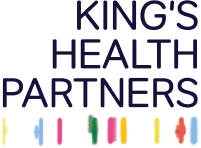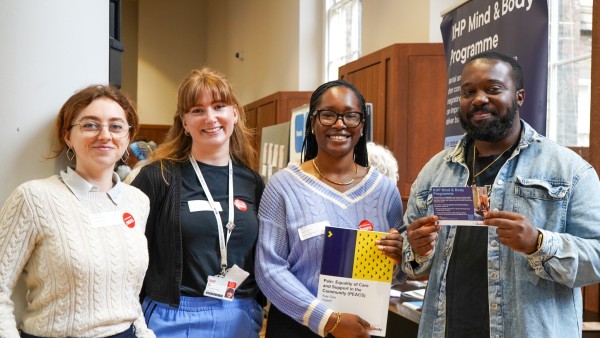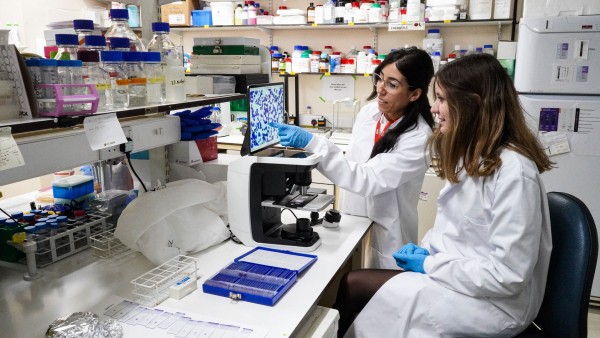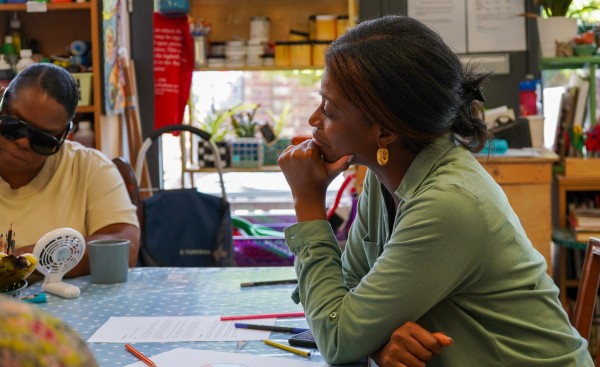12 April 2023
In the Spring of 2022, a group of trans* researchers at King’s College London came together to think about some of the challenges that young people face in accessing NHS services.
Through engaging in a series of Participatory Action Research workshops the research team have developed seven recommendations that invite those working in healthcare settings to examine their own practice and address the obstacles.
KHP News summarises the seven recommendations - which are primarily targeted towards healthcare workers (e.g. GPs, therapists, nurses, receptionists, researchers).
Key recommendations
Be proactive in allyship
Being an ally means demonstrating that you respect, understand, and support trans* people. Meaningful allyship seeks to create a world where trans* people feel affirmed, where they can flourish and be their authentic selves.
Being an ally to trans* people within healthcare settings requires continuous work that involves engaging with trans* people and their experiences to create trust and to provide appropriate treatment.
Examples that can help include:
- Stating your own pronouns and asking others about their own;
- Create space for trust with patients;
- Clarify that services are trans*-inclusive and audit appropriately.
Know the guidelines and laws applicable to your work
This knowledge is not only from a practical standpoint of administering the appropriate treatment, but also in terms of managing expectations and meeting “secondary” needs like updating official records.
The NHS provides information on the treatment pathways available for trans* people and guidance on policies such as name and gendermarker changes to NHS records. These are based on the annual World Professional Association for Transgender Health (WPATH) recommendations.
Ask only what is necessary about a person’s identity
Characteristics of a person's identity (their gender, race, sexuality, etc.) should only be involved when it is necessary information to guide a person's care and/or treatment. For example, if you wish to determine whether a person might be pregnant, it is not relevant to ask about their gender or sexuality. The relevant question is whether the person has engaged in a sexual activity that has the potential to cause pregnancy. An example of where it may be relevant to involve a person's gender is when determining what blood tests to order for particular androgens.
Unnecessarily involving a person's gender may make trans* people uncomfortable, anxious, distressed or dysphoric. This is because they may be forced to use terminology that they do not identify with or feel comfortable using.
Be proactive in discussing terminology
It is important to clarify the terms a patient is comfortable using to describe themselves. This includes, and is particularly important, with terminology used to describe/denote a person's anatomy.
It is common for trans* people to be referred to by words that do not align with them. They may spend a lot of emotional energy on initiating conversations about labels or terms whilst worrying that they won’t be respected or taken seriously.
Actions that can help include using diagrams, gender-neutral descriptions where possible, and avoiding ‘deadnaming’ (explained in more detail below).
Avoid debates on the validity of trans*
This work took place at a time of increased media attention to trans* health care – much of which is charactering by misinformation. These risk being deeply damaging to trans* people and their friends, family, and connections.
The aim of creating a stress-free environment for trans* patients can only be met if they are free from the burden of defending gender identity or expression. For instance, a patient could state their sex/gender identity as “non-conforming”. A practitioner might need to ask necessary questions for clarification if it concerns treatment or affects the services they receive. However, an irresponsible comment would be to insist that they “can only be male or female”, as it pressures them to pick from two identities that aren’t authentic.
Initiate institutional change
To bring about meaningful and sustainable change, allies need to move beyond interpersonal acts of inclusivity and demand institutional and structural change. For example, the intention to make your service or practice trans*-inclusive should be matched with a call for or actions to provide appropriate training for staff at all levels on trans*-inclusive practice and healthcare. An initial step might be to create one All-Gender bathroom at your practice or service, or to put sanitary bins in the men’s bathroom. Fight for making healthcare more trans* inclusive at all levels and encourage the inclusion of trans* led collectives and organisations who have expertise in this area.
Meaningful trans* involvement in research, service design, implementation and service delivery
Historically, trans* people have been excluded from health research, design and delivery of services and treatments that directly impact them, and especially from leadership roles. However, most trans* people have done so much research and advocacy that they become an expert on their own experiences and develop an in- depth critical understanding of the avoidable structural and interpersonal transphobia embedded in our care system. The recommendation is to include trans* people in decision-making roles at every level of your orgnasiation while avoiding tokenism and the homogenisation of trans* experiences. Additionally, a dedicated space for feedback from trans* patients will help inform a better understanding of their needs and how a service can best treat them.
Find out more?
You can read the full recommendations on the King’s College London website.
These recommendations were developed as part of the ‘Trans* Health Participatory Action Research’ Project led by River Ujhadbor, an NIHR Pre-doctoral Fellow at King’s College London. The research team included Eshka Chuck, Nat Gohlan, Francesca Groce, Toby Hambley, Daisy Silverman, and Lucian Wu. Funded by the Wellcome Trust, King’s College London’s Health Inequality Research Group and King’s Engaged Research Network in 2022, the project aimed to improve our understandings of the complex interplay between institutional processes, social environments and the mental lives of young trans* people.
Glossary of terms
Trans*
An umbrella term referring to a wide range of identities within the gender identity spectrum that do not conform to the cisnormative, binary model of gender. Adding the asterisk is a way to liberate ourselves from expectations and the restrictions placed on our lives by rigid societal gender norms. It symbolises how a person’s gender can morph and change as we grow in our humanity.
Cisgender or cis
Refers to people who self-identify with the gender that was presumed for them at birth. Cis people can be either men or women, simply because these are the two genders that currently doctors in the UK label people at birth.
Deadname / deadnaming
Some young people may decide not to use their legal name any longer and choose a name instead that better aligns with their gender identity. In these cases the legal name symbolically “dies” and becomes what we call a “deadname”. When you call a trans* person by the name that they no longer use despite being asked not to, it is an act of “deadnaming”. Using trans* people's deadnames is an explicit sign that you do not respect their autonomy and gender identity.
Gender affirmation
An umbrella term used to describe the range of actions and possibilities involved in living, surviving, and thriving as authentic gendered selves.
Gender affirming therapies
An umbrella term for forms of gender affirmation that often requires the help of health professionals or healing practitioners. This includes (but not limited to) talking therapies, the administering of puberty-delaying drugs (gonadotropin-releasing hormone analogs), surgery, facial hair removal or interventions for the modification of speech and communication and more.
Gender dysphoria
Refers to discomfort or distress that is caused by a discrepancy between a person’s gender identity and the gender that was assigned to them at birth. Not all Trans* people experience gender dysphoria and it is often a complex and non-linear experience.





